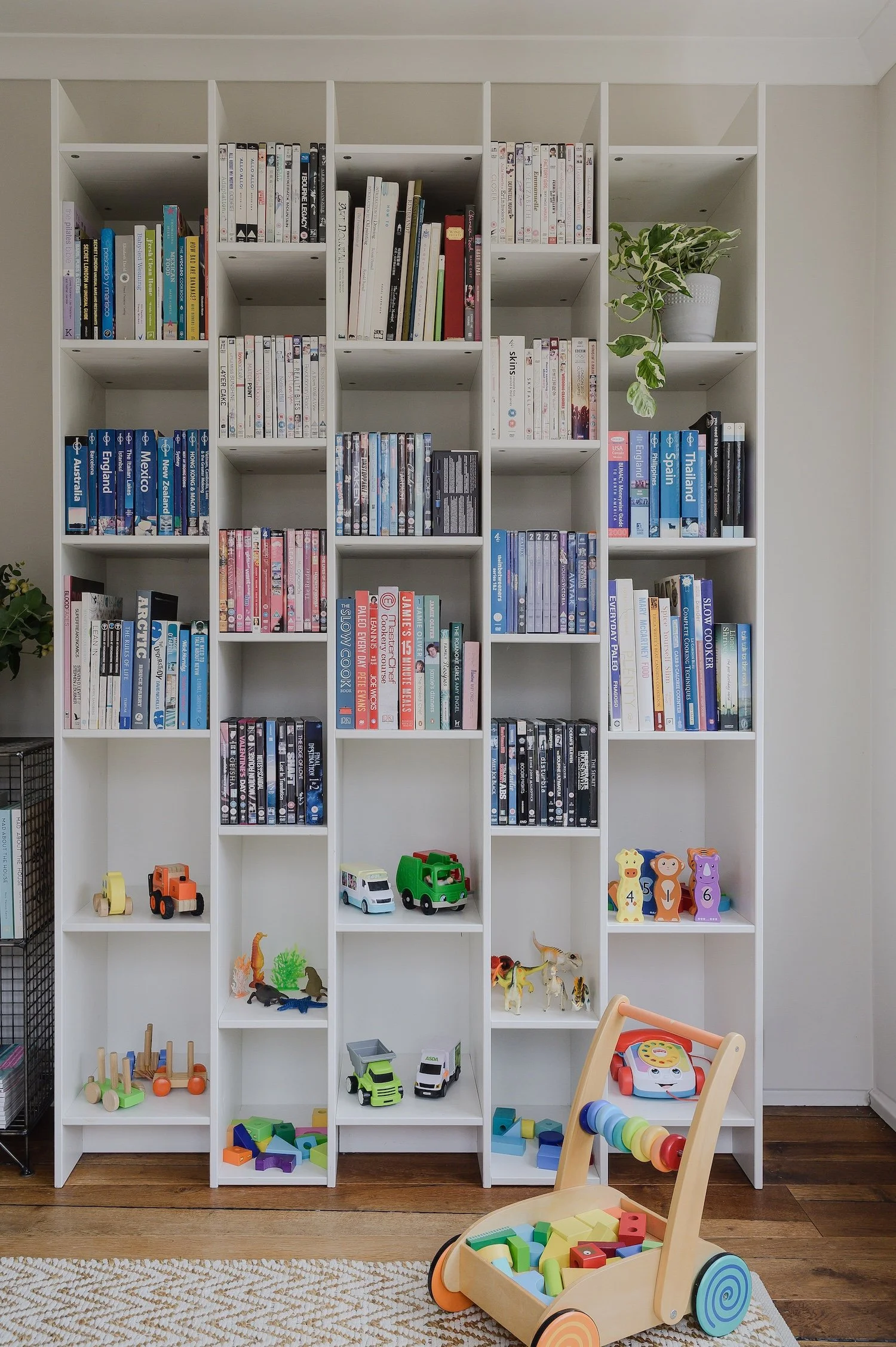Interior Design For Children with Autism
Individuals with autism tend to be more sensitive to their physical surroundings, including the built environment, than neurotypical individuals. Every individual is different; therefore, expertise is required to understand their needs to create interior design solutions that will positively impact them as unique individuals.
What is Interior Design for Autistic Children?
Laura offers a thoughtful and highly personalised interior design service for autistic children, creating spaces that support their unique sensory, emotional, and developmental needs. Her approach is rooted in empathy, research, and collaboration, with families at the heart of every decision. Many autistic children experience heightened sensitivity to light, sound, texture, and spatial layout. Laura’s designs respond to these needs with care, creating environments that feel safe, calming, and empowering.
What is Autism?
Autism, also known as autism spectrum disorder, is a lifelong neurodevelopmental condition that affects how a person experiences and interacts with the world around them. It’s called a ‘spectrum’ because autistic people can have a wide range of strengths and challenges, and no two individuals are exactly alike.
With the right support and understanding, autistic individuals can thrive in environments tailored to their needs. Laura’s specialist interior design for autistic children focuses on creating sensory-friendly, structured, and emotionally supportive spaces that help children feel safe, regulated, and empowered. Sharing diagnosis reports with Laura can be helpful in guiding the design, although it is not essential.
What is Interior Design for Autistic Children?
Giving children a say in their environment
Enhancing wellbeing and relaxation is an essential part of interior design and in the case of children on the autistic spectrum, it is critical to create a therapeutic environment that is restorative for the individual. Giving a child a say in their environment gives them a means to articulate their needs in order to gain control of their surroundings. It’s also important to ensure that within the plans, a child is given choices so they can personalise their space. This can be anything from the colour of walls, to the texture of the upholstery and decorations. This supports independence and self-esteem and is something that benefits all children, not only those who are on the autistic spectrum.
Being able to see without being seen
One important aspect of design is creating the ability to see without being seen. This means allowing a child to visually explore a space before entering it, helping to build confidence and reduce anxiety. Examples of this kind of ‘previewing’ might include sidelights, windows in doors, floor-to-ceiling glass, or even vantage points from above in multi-level spaces. In modern open-plan environments, it’s important to include areas where large groups can gather, while also providing quieter zones that allow more reserved individuals to observe from the side-lines.
Creating optimal lighting
Lighting is another important factor in creating supportive spaces. Achieving the right balance of natural and artificial light can have a significant impact, and a key element is giving the child control over that balance. Providing a variety of light sources such as overhead lighting, task lighting, decorative fixtures, and natural light makes it easier for children to regularly adjust their environment in a way that feels optimal and calming.
It’s also important to reduce glare and harsh shadows, which can be distracting or overstimulating. Matte finishes, wall coverings, carpets, and soft rugs are preferable to shiny or polished surfaces, helping to create a more soothing visual experience.
Balanced colour palettes
It’s also important to keep the quantity of colour minimal to avoid overwhelming children with autism. Overly saturated spaces can be distracting for those sensitive to colour and light, so warm, neutral tones often work best. That said, it’s essential not to generalise - each child has unique preferences and sensitivities. Colour can influence mood, focus, and stress levels for everyone, and this impact is especially significant in the context of autism. Laura’s approach is always tailored to the individual, ensuring that colour choices support comfort and wellbeing.
Create ordered environments
Creating a predictable and ordered environment helps autistic children thrive. These spaces support growth, independence, and emotional regulation. Examples include clear sightlines, logically organised possessions, and ensuring that everything has a designated place aligned with its purpose. Within the overall space plan, zones should be clearly defined for specific activities such as play, rest, and learning. Symmetry in floor plans and furniture arrangements can also contribute to a sense of calm and clarity.
Wayfinding and Spatial Clarity
Wayfinding is a crucial element in autism-sensitive design. Boundaries, access points, exits, and routes within the home should be clearly defined to support spatial awareness and reduce anxiety. Creating visual landmarks such as archways, framed views to the garden, or distinctive architectural features, helps children to build mental maps of their environment. Clearly delineated areas using rugs, ceiling structures, or changes in flooring help ensure that the individual remains grounded and oriented within the space.
Interior Design to Empower Children with Autism
Laura is passionate about designing for autism because of the profound impact that the spaces we inhabit shape how autistic children feel, think and engage with the world. The built environment is so important and is often overlooked. Each person experiences the world differently, and what can feel comfortable to one person, can feel uncomfortable or even painful to others. Being able to design and create spaces that provide this comfort and wellbeing to autistic children and their families is hugely fulfilling.
Laura creates spaces that are supportive, therapeutic, calming, and empowering, - designed not only to meet the needs of neurodivergent children, but to nurture their growth, confidence, and sense of self.



